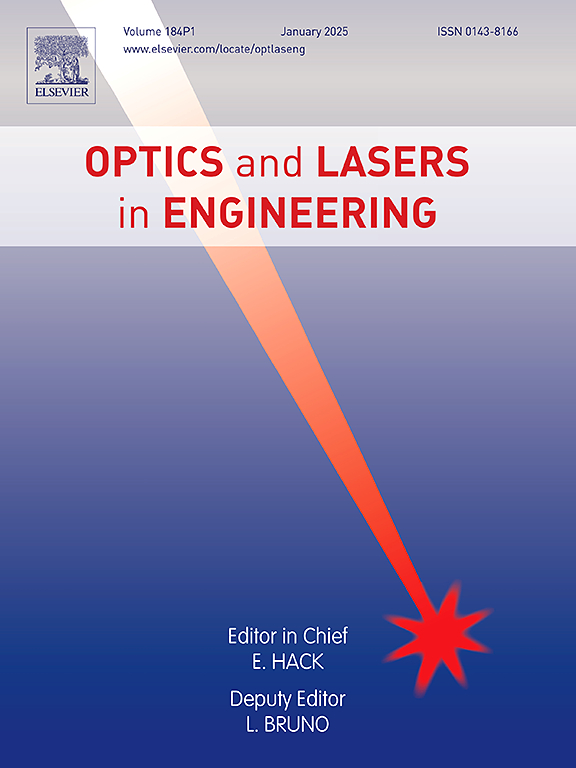无镜头成像系统的四帧像素超分辨率方法
IF 3.7
2区 工程技术
Q2 OPTICS
引用次数: 0
摘要
与传统的镜头式系统相比,无镜头成像系统具有体积小、重量轻的优势,因此近来备受关注。然而,与其他成像方法一样,无透镜成像在解析更多细节的场景时也遇到了挑战。在本文中,我们提出了一种专门为无镜头成像系统定制的新型四帧超分辨率方法。我们的方法与之前的无镜头成像系统有相似之处,都涉及一个传感器和一个放置在图像传感器前的调制装置。我们建立了一个具有子像素位移的显式降解采样模型,并提供了相应逆问题的解决方案,这可能会为其他基于空间位移的超分辨率成像算法提供有价值的指导。通过应用随机横向亚像素位移,获取四幅低分辨率(LR)图像并融合其空间信息,我们实现了高分辨率(HR)传感器记录,从而实现了成像场景的超分辨率重建。数字模拟证明,与单次测量方法相比,空间分辨率提高了大约一倍。此外,我们还评估了我们的方法在使用不同掩膜的各种无镜头成像系统中的性能,验证了它在实现更高分辨率结果方面的通用性和有效性。实验结果也支持我们提出的方案能够在实际系统中实现更高的空间分辨率重建。本文章由计算机程序翻译,如有差异,请以英文原文为准。
Four-frame pixel super-resolution method for lensless imaging systems
Lensless imaging systems have gained significant attention recently due to their advantages in terms of reduced size and weight compared to traditional lens-based systems. However, like other imaging methods, lensless imaging encounters challenges in resolving scenes with more details. In this article, we propose a novel four-frame super-resolution method specifically tailored for lensless imaging systems. Our approach shares similarities with previous lensless imaging systems, involving a sensor and a modulation device placed in front of the image sensor. We develop an explicit degradation downsampling model with sub-pixel shifts and provide the solution to corresponding inverse problem, may offering valuable guidance for other super-resolution imaging algorithms based on spatial displacements. By applying random lateral sub-pixel shifts, acquiring four low-resolution (LR) images, and fusing their spatial information, we achieve high-resolution (HR) sensor recordings, enabling super-resolution reconstruction of the imaging scene. Numerical simulations demonstrate approximately an improvement in spatial resolution compared to single-measurement methods. Furthermore, we evaluate the performance of our method across various lensless imaging systems utilizing different masks, validating its versatility and effectiveness in achieving higher resolution outcomes. Experimental results also support our proposed scheme's ability to achieve higher spatial resolution reconstruction in a real system.
求助全文
通过发布文献求助,成功后即可免费获取论文全文。
去求助
来源期刊

Optics and Lasers in Engineering
工程技术-光学
CiteScore
8.90
自引率
8.70%
发文量
384
审稿时长
42 days
期刊介绍:
Optics and Lasers in Engineering aims at providing an international forum for the interchange of information on the development of optical techniques and laser technology in engineering. Emphasis is placed on contributions targeted at the practical use of methods and devices, the development and enhancement of solutions and new theoretical concepts for experimental methods.
Optics and Lasers in Engineering reflects the main areas in which optical methods are being used and developed for an engineering environment. Manuscripts should offer clear evidence of novelty and significance. Papers focusing on parameter optimization or computational issues are not suitable. Similarly, papers focussed on an application rather than the optical method fall outside the journal''s scope. The scope of the journal is defined to include the following:
-Optical Metrology-
Optical Methods for 3D visualization and virtual engineering-
Optical Techniques for Microsystems-
Imaging, Microscopy and Adaptive Optics-
Computational Imaging-
Laser methods in manufacturing-
Integrated optical and photonic sensors-
Optics and Photonics in Life Science-
Hyperspectral and spectroscopic methods-
Infrared and Terahertz techniques
 求助内容:
求助内容: 应助结果提醒方式:
应助结果提醒方式:


